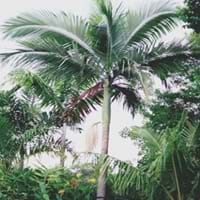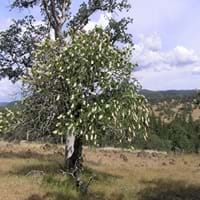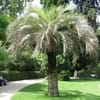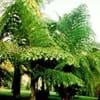Life Span
Perennial
Perennial
Origin
Australia
California
Types
Walsch River Palm
King Palm
Myola King Palm
Purple Crown Shaft King Palm
Peach River Palm
Not Available
Number of Varieties
Not Available
Habitat
Coastal Mountains, Coastal Regions, gardens, Suburban areas
Hillside
USDA Hardiness Zone
10-14
7-9
Sunset Zone
H1, H2, 21, 22, 23, 24
3a, 3b, 4, 5, 6, 7, 8, 9, 10, 14, 15, 16, 17, 18, 19, 20, 21, 22, 23, 24
Habit
Arching/Fountain-shaped
Oval or Rounded
Flower Color
White, Yellow, Lavender
White, Pink
Flower Color Modifier
Bicolor
Bicolor
Fruit Color
Red
Yellow Brown
Leaf Color in Spring
Green, Silver
Light Green
Leaf Color in Summer
Green, Silver
Green
Leaf Color in Fall
Green, Silver
Not Available
Leaf Color in Winter
Green, Silver
Not Available
Leaf Shape
Long Elliptic
Oval
Plant Season
Spring, Summer, Fall, Winter
Spring, Summer, Fall, Winter
Sunlight
Full Sun, Partial Sun
Full Sun, Partial Sun
Type of Soil
Clay, Loam, Sand
Clay, Loam, Sand
The pH of Soil
Acidic, Neutral
Acidic, Neutral
Soil Drainage
Well drained
Well drained
Bloom Time
Indeterminate
Late Spring, Early Summer
Tolerances
Wet Site
Drought, Salt
Where to Plant?
Ground
Ground
How to Plant?
Seedlings
Seedlings
Plant Maintenance
Medium
Medium
Watering Requirements
Do not water frequently, Keep the ground moist but not water-logged, Over-watering can cause leaf problems or root diseases, Water Deeply
Keep the ground moist but not water-logged, Requires regular watering, Requires watering in the growing season
In Summer
Lots of watering
Lots of watering
In Spring
Moderate
Moderate
In Winter
Average Water
Average Water
Soil pH
Acidic, Neutral
Acidic, Neutral
Soil Type
Clay, Loam, Sand
Clay, Loam, Sand
Soil Drainage Capacity
Well drained
Well drained
Sun Exposure
Full Sun, Partial Sun
Full Sun, Partial Sun
Pruning
Prune if you want to improve plant shape, Remove deadheads, Remove shoots
Remove damaged leaves, Remove dead leaves, Remove dead or diseased plant parts
Fertilizers
All-Purpose Liquid Fertilizer
All-Purpose Liquid Fertilizer
Pests and Diseases
Red blotch
Red blotch
Plant Tolerance
Drought
Drought
Flower Petal Number
Single
Not Available
Foliage Texture
Bold
Medium
Foliage Sheen
Glossy
Glossy
Attracts
Not Available
Birds, Butterflies
Allergy
no allergic reactions
Not Available
Aesthetic Uses
Beautification
Beautification, Landscape Designing, Showy Purposes
Beauty Benefits
Not Available
Not Available
Environmental Uses
Air purification
Air purification
Medicinal Uses
Not Available
Not Available
Part of Plant Used
Whole plant
Fruits
Other Uses
Decoration Purposes, Used as Ornamental plant
Decoration Purposes, Showy Purposes, Used as Ornamental plant
Used As Indoor Plant
No
No
Used As Outdoor Plant
Yes
Yes
Garden Design
Container, Feature Plant, Street Trees, Tropical, Water Gardens
Dried Flower, Everlasting, Feature Plant, Hedges, Mixed Border, Screening, Wind Break
Botanical Name
ARCHONTOPHOENIX alexandrae
AESCULUS californica
Common Name
Alex Palm, Alexandra Palm, Princess Alexandra Palm
California Buckeye
In Hindi
Alexandra palm
कैलिफोर्निया Buckeye
In German
Alexandra palm
California Buckeye
In French
Alexandra palme
California Buckeye
In Spanish
Alexandra palma
California Buckeye
In Greek
Αλεξάνδρα παλάμη
Καλιφόρνια Buckeye
In Portuguese
Alexandra palma
California Buckeye
In Polish
Alexandra dłoni
Kalifornia Buckeye
In Latin
Alexandra palma
California Buckeye
Phylum
Not Available
Magnoliophyta
Class
Liliopsida
Magnoliopsida
Order
Arecales
Sapindales
Family
Arecaceae
Sapindaceae
Genus
Archontophoenix
Aesculus
Clade
Not Available
Angiosperms, Eudicots, Rosids
Tribe
Areceae
Not Available
Subfamily
Arecoideae
Hippocastanoideae
Number of Species
Not Available
Properties of Alexandra Palm and California Buckeye
Wondering what are the properties of Alexandra Palm and California Buckeye? We provide you with everything About Alexandra Palm and California Buckeye. Alexandra Palm doesn't have thorns and California Buckeye doesn't have thorns. Also Alexandra Palm does not have fragrant flowers. Alexandra Palm has allergic reactions like no allergic reactions and California Buckeye has allergic reactions like no allergic reactions. Compare all the properties and characteristics of these two plants. Find out which of these plant can be used as indoor plant. If you are interested to decorate your house and garden, find out aesthetic uses, compare them and select the plant which will beautify your surrounding. Along with beautification, try comparing medicinal and edible uses of Alexandra Palm and California Buckeye and you can choose the plant having best and most benefits.
Season and Care of Alexandra Palm and California Buckeye
Season and care of Alexandra Palm and California Buckeye is important to know. While considering everything about Alexandra Palm and California Buckeye Care, growing season is an essential factor. Alexandra Palm season is Spring, Summer, Fall and Winter and California Buckeye season is Spring, Summer, Fall and Winter. The type of soil for Alexandra Palm is Clay, Loam, Sand and for California Buckeye is Clay, Loam, Sand while the PH of soil for Alexandra Palm is Acidic, Neutral and for California Buckeye is Acidic, Neutral.
Alexandra Palm and California Buckeye Physical Information
Alexandra Palm and California Buckeye physical information is very important for comparison. Alexandra Palm height is 610.00 cm and width 460.00 cm whereas California Buckeye height is 460.00 cm and width 460.00 cm. The color specification of Alexandra Palm and California Buckeye are as follows:
Alexandra Palm flower color: White, Yellow and Lavender
Alexandra Palm leaf color: Green and Silver
California Buckeye flower color: White and Pink
- California Buckeye leaf color: Light Green
Care of Alexandra Palm and California Buckeye
Care of Alexandra Palm and California Buckeye include pruning, fertilizers, watering etc. Alexandra Palm pruning is done Prune if you want to improve plant shape, Remove deadheads and Remove shoots and California Buckeye pruning is done Remove damaged leaves, Remove dead leaves and Remove dead or diseased plant parts. In summer Alexandra Palm needs Lots of watering and in winter, it needs Average Water. Whereas, in summer California Buckeye needs Lots of watering and in winter, it needs Average Water.





